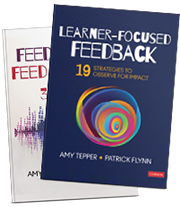We all love our holidays. In the U.S., we dedicate the second to last Thursday of November just to being thankful. Perhaps you grew up in a family where before you could eat on Thanksgiving, everyone had to share something they were thankful for. Mashed potatoes and stuffing had to wait until everyone had spoken–all 10 of you, when all you wanted to do was eat. Hopefully, there was a shout out to the cook for the hours of preparation. But, why do we wait until Thanksgiving to really give thanks?
We tend to do the same thing with our educators–in the U.S in May and a World Appreciation Day in October…and April 6-10 for assistant principals (NASSP). But, guess when our educators need appreciation the most? Hint: every day.
Popcorn and Toast or Pizza and Sandwiches
There are plenty of great ideas for gifts that go a long way to show appreciation for teachers like pizza or snacks in the staff room and gift cards for much needed coffee. Yet, they need more from us. We can utilize observation and feedback, whether we are a peer, coach, or administrator, to ensure teachers feel valued by:
- Helping them clearly see they are making a difference ensuring an accurate perception of their impact on their learners, and
- Building on their strengths and identified goals
Sometimes teachers receive praise a few times a year with potential feedback or criticism layered between. Sure, we all love turkey sandwiches after Thanksgiving, but praise sandwiches…not so much. So why do we do it? As providers of feedback, according to Harvard Business Review, we believe
- “It’s easier for people to hear and accept negative feedback when it comes with positive feedback…it reduces discomfort and anxiety.
- The sandwich approach provides balanced feedback.”
Stone and Heen remind us, receivers “are in control of what they do and don’t let in, how they make sense of what they are hearing, and whether they choose to change.” So it seems logical that if we place the “bad news” between several layers of “good news” we increase the probability of the receiver positively receiving, right? Nope. Here’s why:
- It tastes funny: The compliment or strength is lost, as is trust.
- Wraps taste better: Areas for growth or next steps are lost to recency of the praise just before they leave, giving a false sense of accomplishment
The Right Ingredients
Learner-focused feedback is not a praise sandwich. It is feedback that feeds forward: built on strengths, based on how the teacher is impacting learners, allowing a teacher grow. Let’s look at a nonexample:
“I loved your anchor charts.”
(But, were they useful to the learners?) Even when we shift and collect evidence about students, we can still miss the (gravy) boat in helping teachers see strengths beyond compliance. For example:
Observer 1: The teacher modeled an example of how to complete the task and gave clear directions. All screens were visible, and nearly all students were actively talking to a neighbor and highlighting in different colors.
Observer 2: The observer asked half the partnerships, “What are you doing?” and all listed the directions for color coding correctly. Clearly, students knew what to do, were engaged using technology, and were working in partnerships.
(from Learner-Focused Feedback: 19 Strategies to Observe for Impact)
(But were they successful at the task of highlighting the claim and supporting evidence? Why or why not?)
Learner-focused feedback that feeds forward is complex.
“Each brain grows most where it’s already strongest.”
(https://hbr.org/2019/03/the-feedback-fallacy)
So, how do we build on strengths to ensure next steps allow teachers to move forward in their zone of proximal development?
- Know your teachers and consistently get into classrooms.
- Improve your ability to collect evidence from learners to determine if they are engaged and learning and why or why not
- Honor what each teacher brings to the table in terms of values, beliefs, experience, and knowledge.
- Personalize feedback and professional learning because support looks different for everyone
- Use our resources from Feedback to Feed Forward.
- Strategy 20: Focus on the overall observed impact on student learning and engagement
- Strategy 21: Use the instructional framework to recognize expectations
- Strategy 22: Use what you know about research-based strategies
- Free Resource Strengths Frame
Ready for Dessert
Small actions matter. However, taking the time to consistently visit classrooms and give face-to-face feedback helps teachers clearly see their positive impact (the reason they come to work every day!).
And, let’s not forget our leaders. We must also consider how all of this could apply to their support. They too need to feel valued and recognize their positive impact on teachers and students. When we provide on-going feedback built on strengths, we:
- Increase Retention: About 30 percent of teachers are leaving the field, most due to dissatisfactions with teaching.
Data on principal turnover reveal the national average tenure of principals in their schools was four years as of 2016–17, and most recently, approximately 18 percent of principals were no longer in the same position one year later.
- Support Wellness: Data from the 2013 found that 46% of teachers in K-12 settings report high levels of daily stress during the school year.
Of 30,000 teachers surveyed, 89% said they had been enthusiastic about teaching when they started the profession, but only 15% reported being enthusiastic at the time they completed the survey.
We can have an impact because we are…
- increasing objectivity
- ensuring next steps are attainable and actionable
- ensuring feedback becomes a learning tool
- setting the receiver up for mastery experiences (a source of self-efficacy)
- supporting receivers in becoming assessment-capable learners who understand “How am I going?” and “What’s next?”
We don’t have to wait for a holiday or special occasion to help teachers and leaders see how they positively impact learners every day. In the immortal words of Charlie Brown (Charles Schultz), “What if today we were grateful for everything?”
Let’s Stay Connected! – Sign up for our mailing list
Pre-order our new book Learner-Focused Feedback: 19 Strategies to Observe for Impact
Order today Feedback to Feed Forward: 31 Strategies to Lead Learning





Leave a Reply